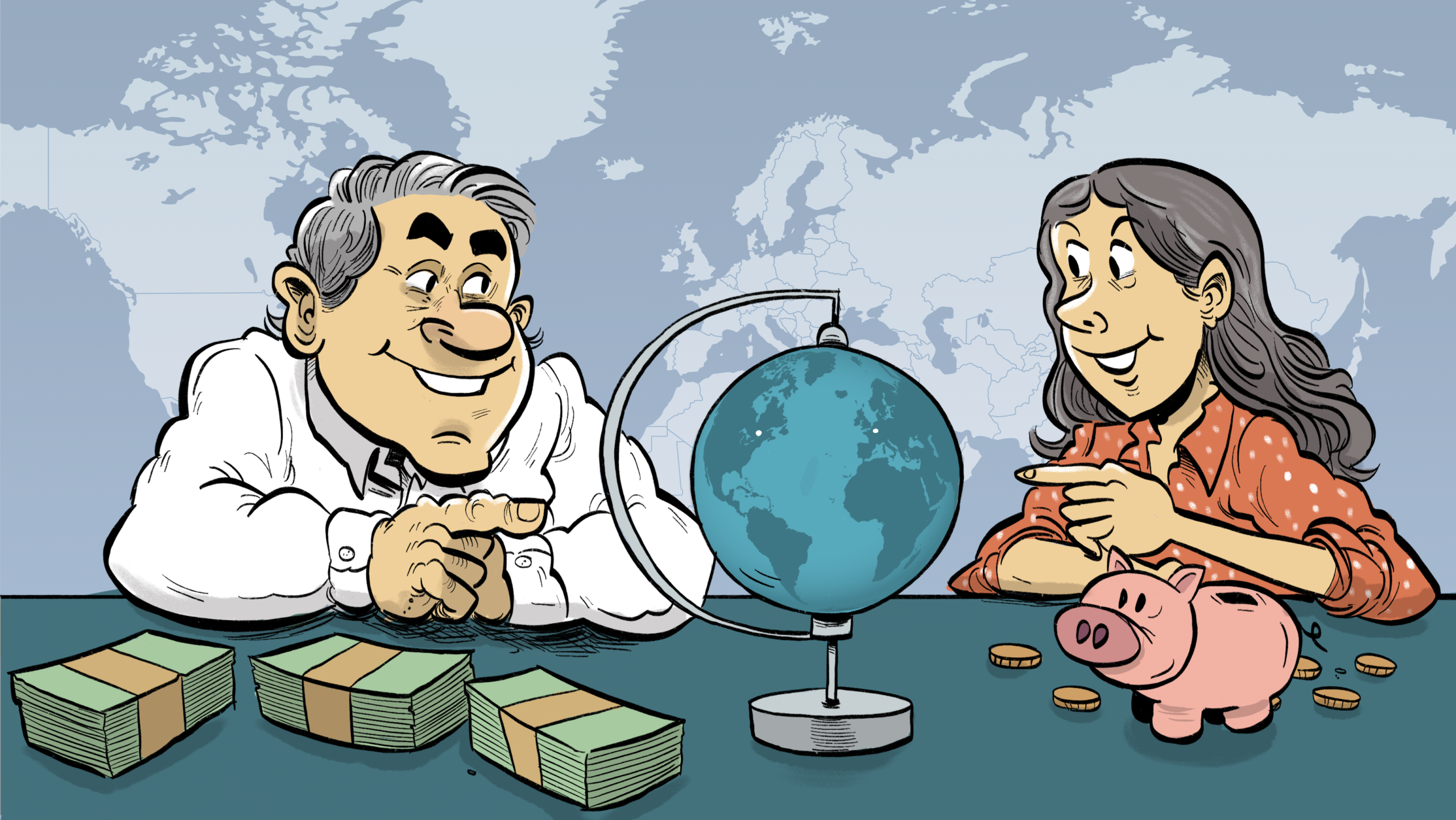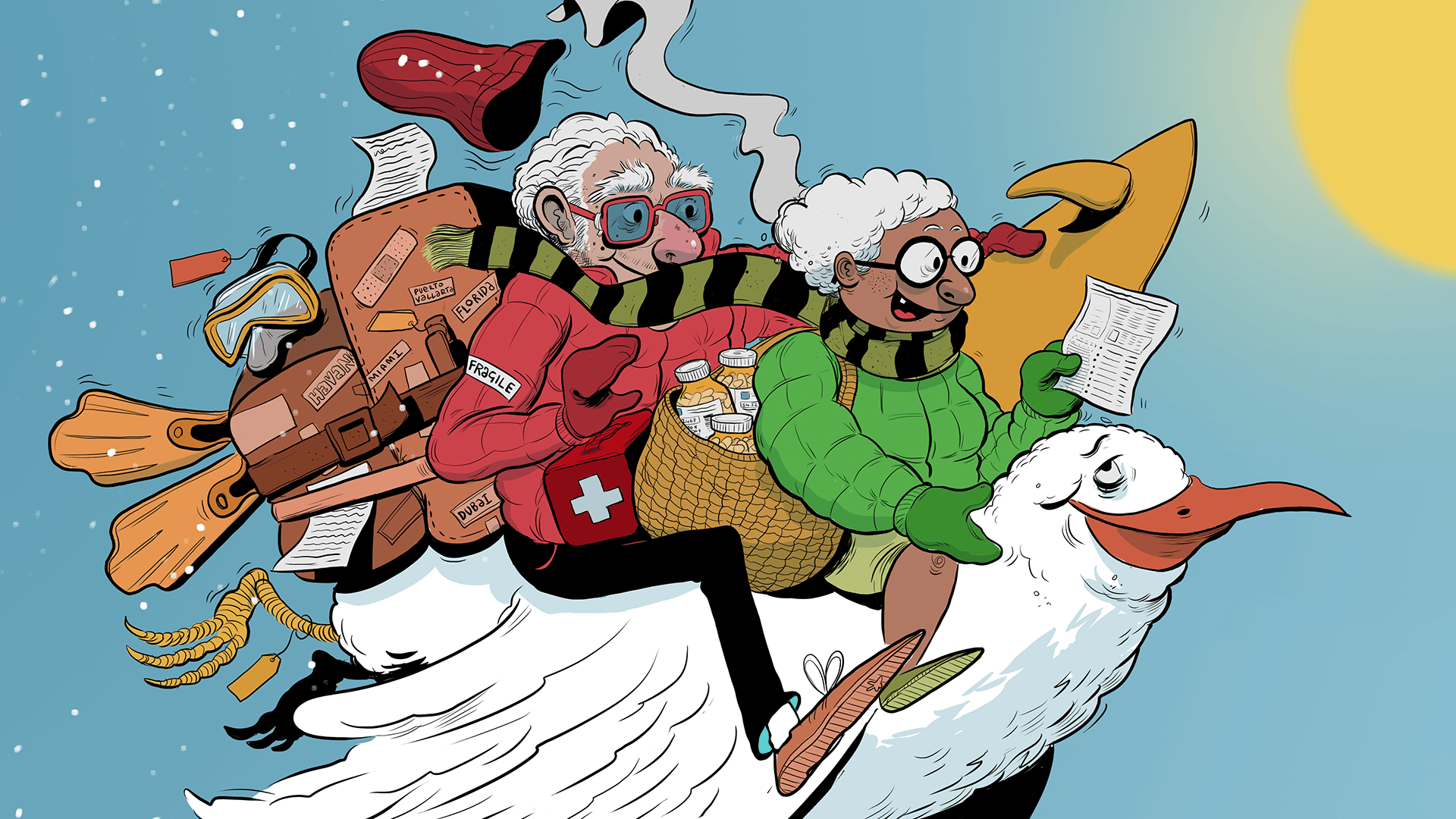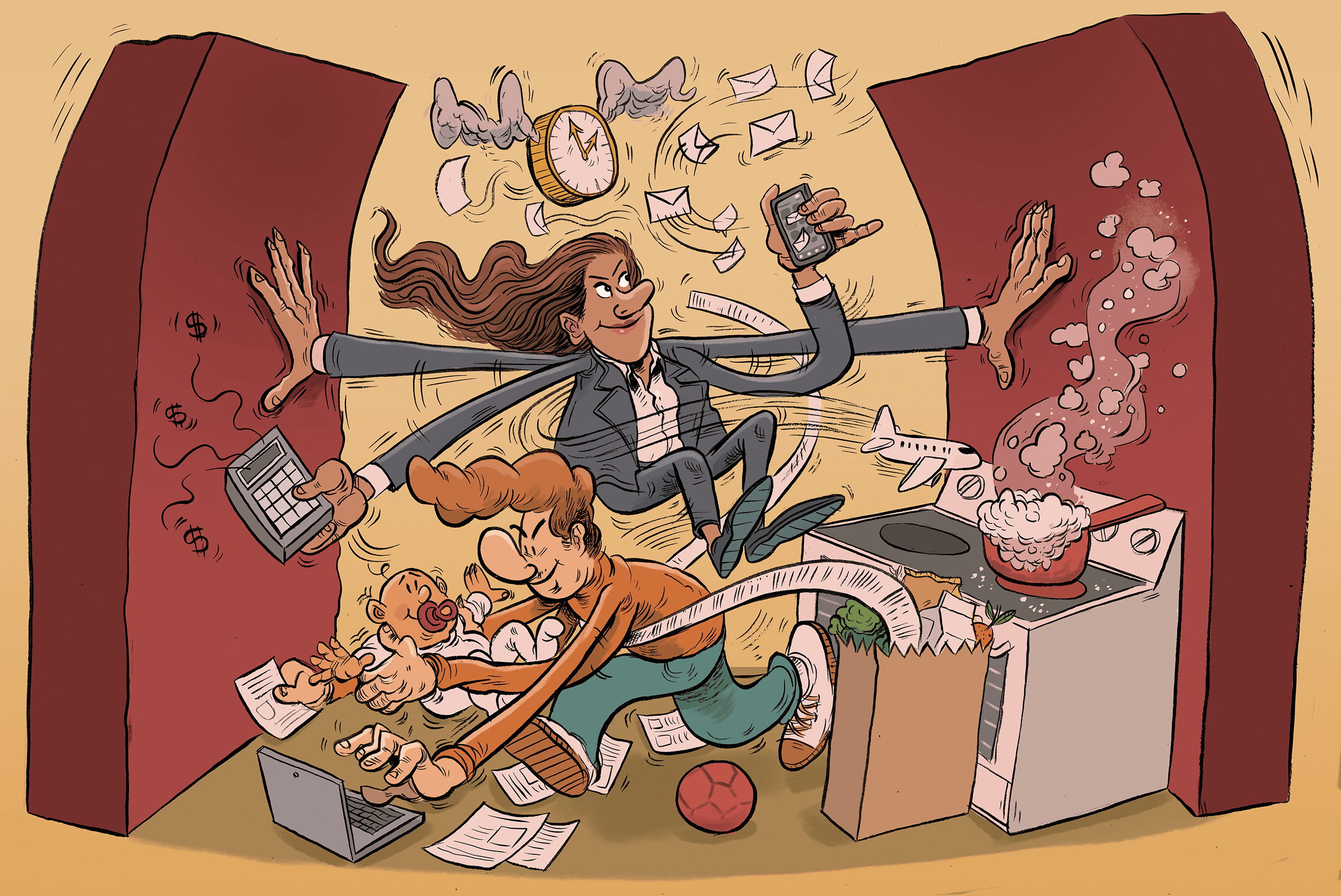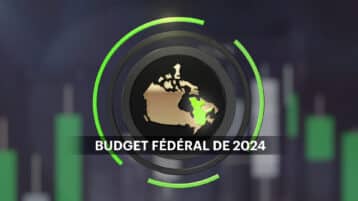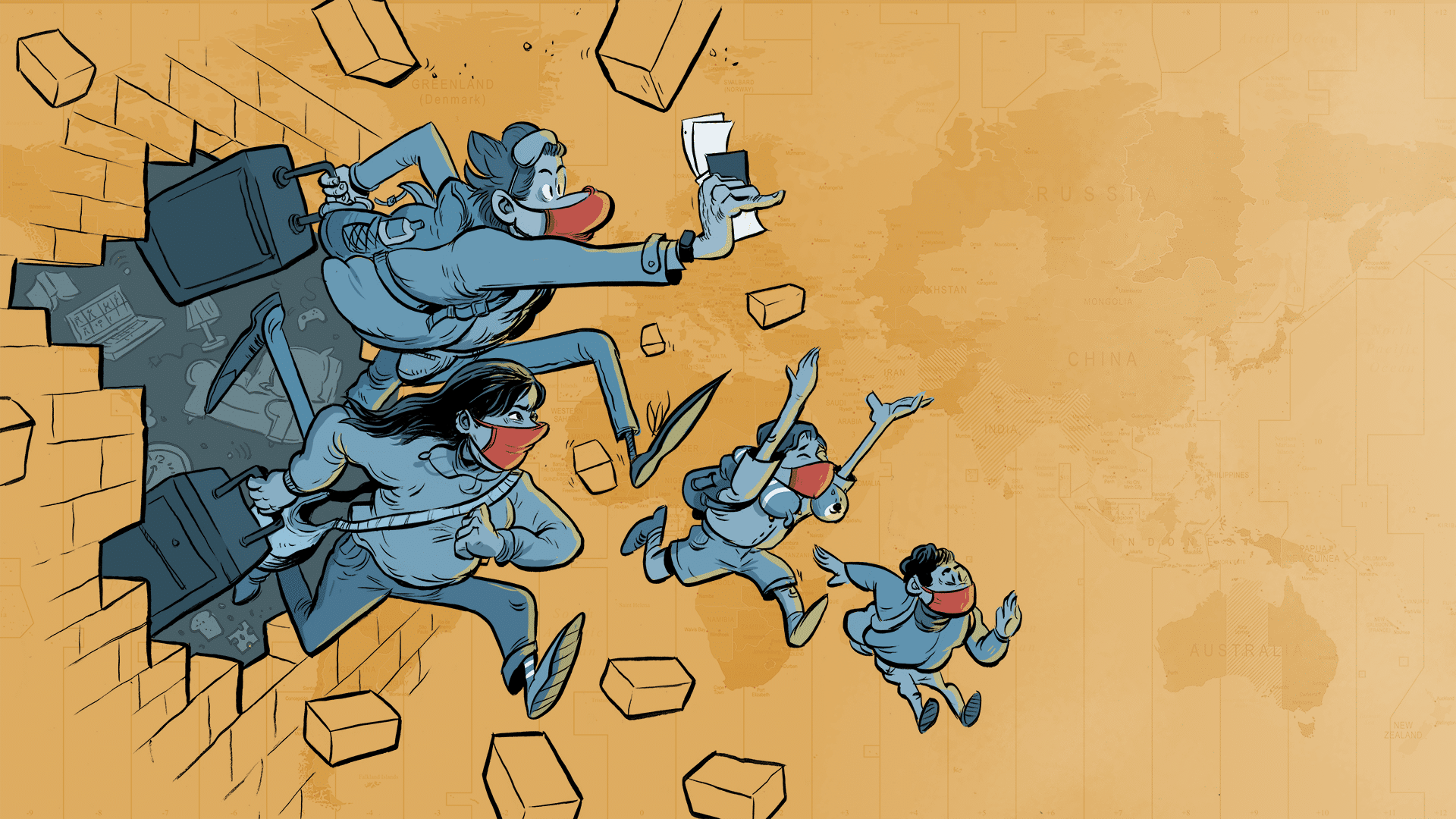
Planning for a getaway when you’re ready to travel
After a year and a half of mostly staying put, some Canadians may be planning to re-enter the world of personal travel. When you feel ready to get back on the road or onto an airplane, we’ve got some ideas to help get you there.
It’s been nearly two years since most Canadians have moved much beyond their immediate surroundings. But as vaccines continue to roll out and businesses cautiously reopen, the idea of travelling for pleasure is slowly coming back to life. That’s welcome news: for moms and dads who haven’t seen their children since the pandemic began, for parents of newborns who haven’t had a chance to introduce their kid to family members, and for friends who haven’t seen each other in person in months. Many others are just eager for a change of scenery.
But as welcome as it may be to feel wanderlust again, it can be important to tread carefully, for your health and financial well-being. Many Canadians saved a little extra during the pandemic — somewhere around $200 billion collectively in 2020 — but that doesn’t mean you want to spend it all on your first vacation. 1 Many Canadians also reported cutting back on saving during the pandemic (13% according to a recent TD poll), and now may be a critical time to get back on track.
There are also COVID-19 pandemic-related rules and restrictions to consider. If you’re not careful about where and how you book, it could derail your vacation days. Fortunately, with a bit of preparation you can plan a successful and longed-for vacation.
Get your travel budget flying
With non-essential travel restricted during much of the pandemic, many Canadians put vacation travel dollars into home renovations and savings. Now that travel is possible again, it may be an ideal time to review and update your budget, particularly if you’ve had a change in income or household expenses over the last two years. Using apps, such as TD MySpend which lets you track spending and set budget goals for different categories, can help you get a handle on your bigger financial picture and how your spending patterns have evolved. TD MySpend allows you to allocate savings for multiple goals in one account — such as 33% for a new home, 33% for a future car and the remainder for travel. This can be ideal if you have to adjust other spending areas (such as slowing down on takeout food or streaming subscriptions) to get your travel savings back in order.
Alternatively, you may learn that your spending has slowed, and you have funds that can be directed toward your future travel plans. In which case you can use the TD MySpend’s Wishlist feature to allocate a higher percentage of funds to a specific goal, such as a vacation. That way you’ll know exactly how much money you have available when you’re planning a trip. You can also track your progress towards your goal and TD MySpend will estimate when you’ll reach the full amount.
Keep your travel budget in check
The prospect of getting back to travel is exciting, but it can be important to not go overboard. Don’t let pent-up excitement push you to spend — you can use the percentage of your earnings you had allocated to travel pre-pandemic as a guide. Add in a few in-trip splurges like a nice dinner out or a hotel upgrade if you managed to save a lot from last year’s unused travel budget. Some vacationers are finding their travel dollars go further than expected, with special deals on airfare for example, while others have noted other services and costs have increased.
One way to save more for travel? Consider using a pre-authorized service transfer to automatically move money from your chequing account into a savings account. For example, once you decide on a spending budget, you can open a savings account earmarked for travel and automatically move funds from each paycheque into the account.
Protect your travel dollars
Once you’ve landed on where you want to go and how much you can spend, you’ll need to consider where you’re going to stay and how you’re going to get around. Travelling today means understanding cancellation fees, rebooking costs, COVID-19 pandemic-related restrictions and more. Many resorts, airlines and hotels have instituted cancellation policies depending on their local situation. Before booking, check to see if refunds can be given and under what circumstances. Be sure to look at the COVID-19 pandemic policies listed on each airline and hotel’s website. Given how quickly things are evolving, you may wish to follow up with a call to make sure you know exactly in what situations you can cancel or change your itinerary.
Be aware of evolving situations
It can also be critical to pay attention to travel restrictions and COVID-19 pandemic case trends in the destinations you plan to visit. With the Delta variant causing case counts to rise in certain parts of the world, it’s entirely possible that new restrictions, from governments or your airline, could come into place, forcing you to cancel a trip at the last minute, or worse, leave you stranded. If you are travelling to the U.S., you may want to ensure that you are aware of any entry requirements and costs associated with COVID-19 testing. Before booking, look at the Government of Canada’s travel advisory page, which updates each time a new restriction is added.
Take a deep breath and have fun
Wherever you go, try to relax and have fun. Spending money on travel should be seen as an investment in the joy of experience, be it a grand adventure or a week of rejuvenation. With that in mind, make sure that all the activities you want to do before you go are still open so that you can enjoy your vacation.
Setting up a trip today may require a little more thought than in the past, but plan ahead, budget correctly and consider any additional pandemic-related costs and restrictions: If all goes well, you’ll be kicking back and enjoying new experiences in no time. After a year and a half of being cooped up at home, you deserve it.
BRYAN BORZYKOWSKI
MONEYTALK LIFE
ILLUSTRATION
DANESH MOHIUDDIN
- Beata Caranci, Sri Thanabalasingam, Prospects for Canadian Consumers: To Save, Spend, or Pay Down Debt?, TD Economics, Feb. 18, 2021, accessed Sept. 22, 2021, economics.td.com/prospects-canadian-consumers ↩


